Tutorial
Skeleton
A Skeleton contains below attributes.
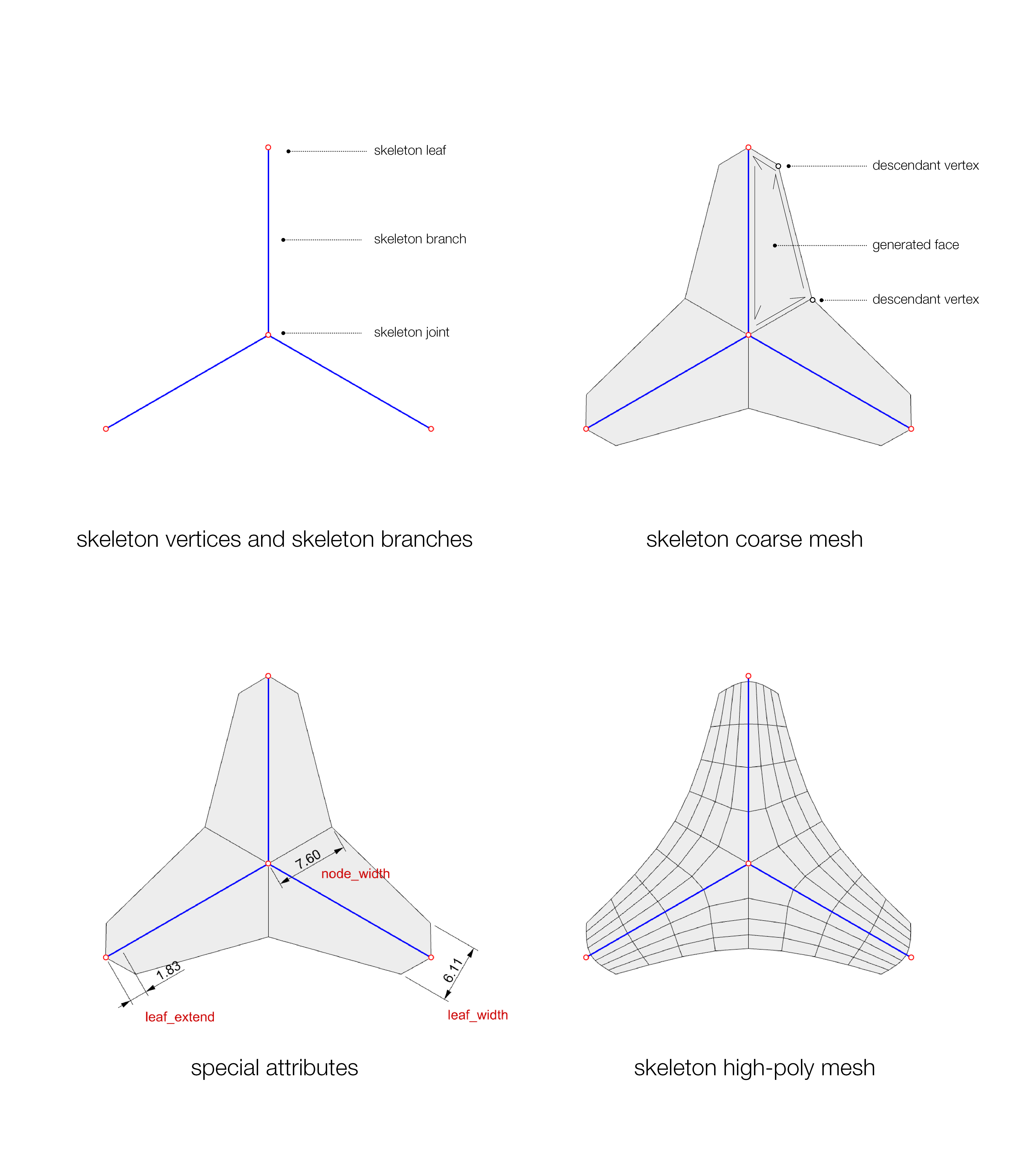
skeleton branches and skeleton vertices
Skeleton contains a set of lines as skeleton_branches.
The start and end points are stored as skeleton_vertices.
There are two typs of skeleton_vertices: skeleton_joint and skeleton_leaf.
skeleton coarse mesh
Each skeleton branch halfedge generates two new vertices as descendent_vertices.
Together with the two skeleton_vertices, they compose a mesh face.
Descendent vertices and face are then added to the skeleton coarse mesh.
special attributes
Parameters node_width, leaf_width, leaf_extend represent the features of skeleton coarse mesh, respectively.
skeleton hight-poly mesh
Skeleton high-poly mesh is the result of coarse mesh subdivision, which is decided by attribute sub_level.
sub_leve can be increased or decreased during any step of modification, for a preferred visualisation.
Create Skeleton
Create Skeleton from lines:
from compas_skeleton.datastructure import Skeleton
from compas_skeleton.rhino import SkeletonArtist
lines = [
([0.0, 0.0, 0.0], [0.0, 10.0, 0.0]),
([0.0, 0.0, 0.0], [-8.6, -5.0, 0.0]),
([0.0, 0.0, 0.0], [8.6, -5.0, 0.0])
]
skeleton = Skeleton.from_skeleton_lines(lines)
artist = SkeletonArtist(skeleton)
artist.draw()
Create Skeleton from a single point:
point = [0, 0, 0]
skeleton = Skeleton.from_center_point(point)
Skeleton Artist
SkeletonArtist is a customized MeshArtist
for displaying Skeleton vertices, branches and mesh in Rhino.
from compas_skeleton.rhino import SkeletonArtist
artist = SkeletonArtist(skeleton)
artist.draw()
Skeleton object
While Skeleton is a datastructure independed from third party software, SkeletonObject is the implementation of Skeleton in Rhino.
Each SkeletonObject contains a Skeleton as its datastructure and a SkeletonArtist. It provides interactive editing methods and visulisation in Rhino.
Create Skeleton Object
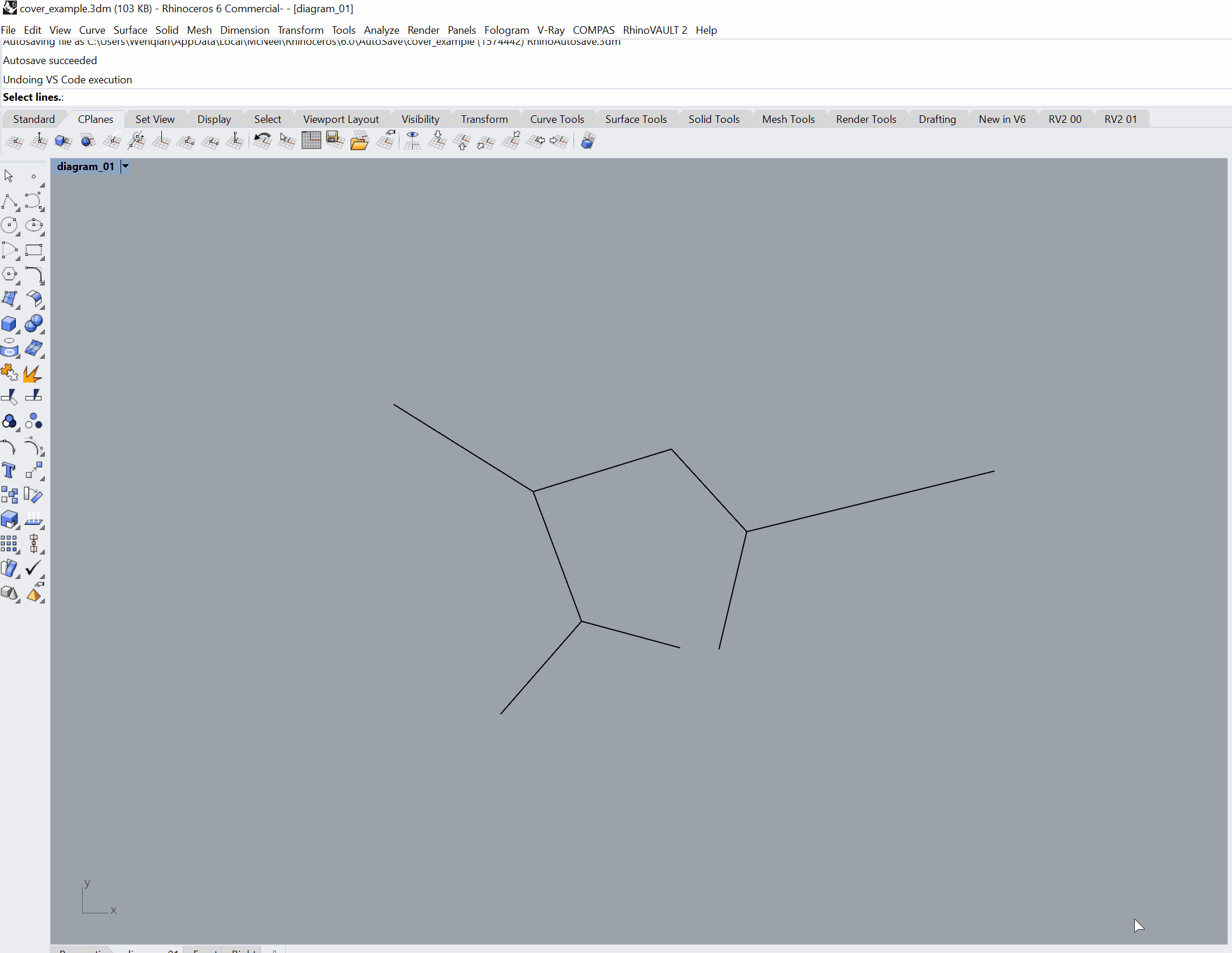
from compas_skeleton.datastructure import Skeleton
from compas_skeleton.rhino import SkeletonObject
import compas_rhino
guids = compas_rhino.select_lines()
lines = compas_rhino.get_line_coordinates(guids)
skeleton = Skeleton.from_skeleton_lines(lines)
skeletonobject = SkeletonObject(skeleton)
skeletonobject.draw()
Interactive input width
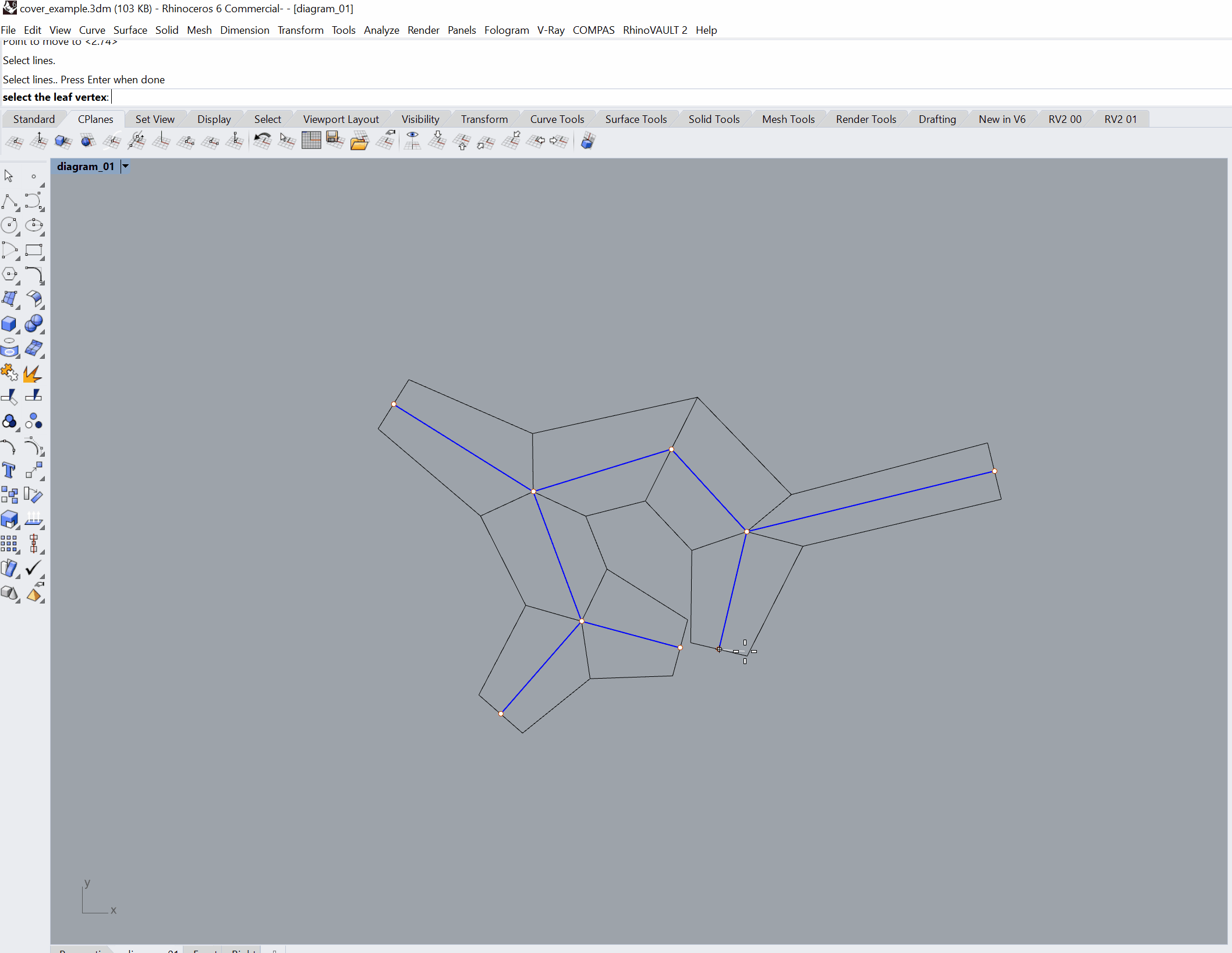
skeletonobject = SkeletonObject(skeleton)
skeletonobject.dynamic_draw_widths()
There are 3 steps of dynamic_draw_widths:
click on the joint node, move cursor to decide node width
click on the leaf vertex, move cursor to decide leaf width
click on the leaf vertex again, move cursor to decide how far or to which direction to extend the leaf ends.
Serialization and reloading
Serilize the datastructure for further editing.
import os
HERE = os.path.dirname(__file__)
FILE = os.path.join(HERE, 'skeleton.json')
# method 1
skeleton.to_json(FILE, pretty=True)
# method 2
skeletonobject.datastructure.to_json(FILE, pretty=True)
# reload
skeleton = Skeleton.from_json(FILE)
skeletonobject = SkeletonObject(skeleton)
SkeletonObject.datastructure is a Skeleton object. So the result of the two methods above are the same.
But after a skeleton object is created, we should always choose the second method so that all the modifications will be stored.
Interactive editing
After the skeleton mesh is created, it can be modified with interactive input. Editing skeleton branches or changing width parameters will update related descendent vertices and as well as the entire mesh.
# load skeleton from previous step
skeleton = Skeleton.from_json(FILE)
skeletonobject = SkeletonObject(skeleton)
skeletonobject.update()
skeletonobject.datastructure.to_json(FILE, pretty=True)
Once update mode is activated, editing methods can be called by typing command name directly in Rhino command window. Following commands are available:
node_width
Change the skeleton mesh width at all joint nodes.
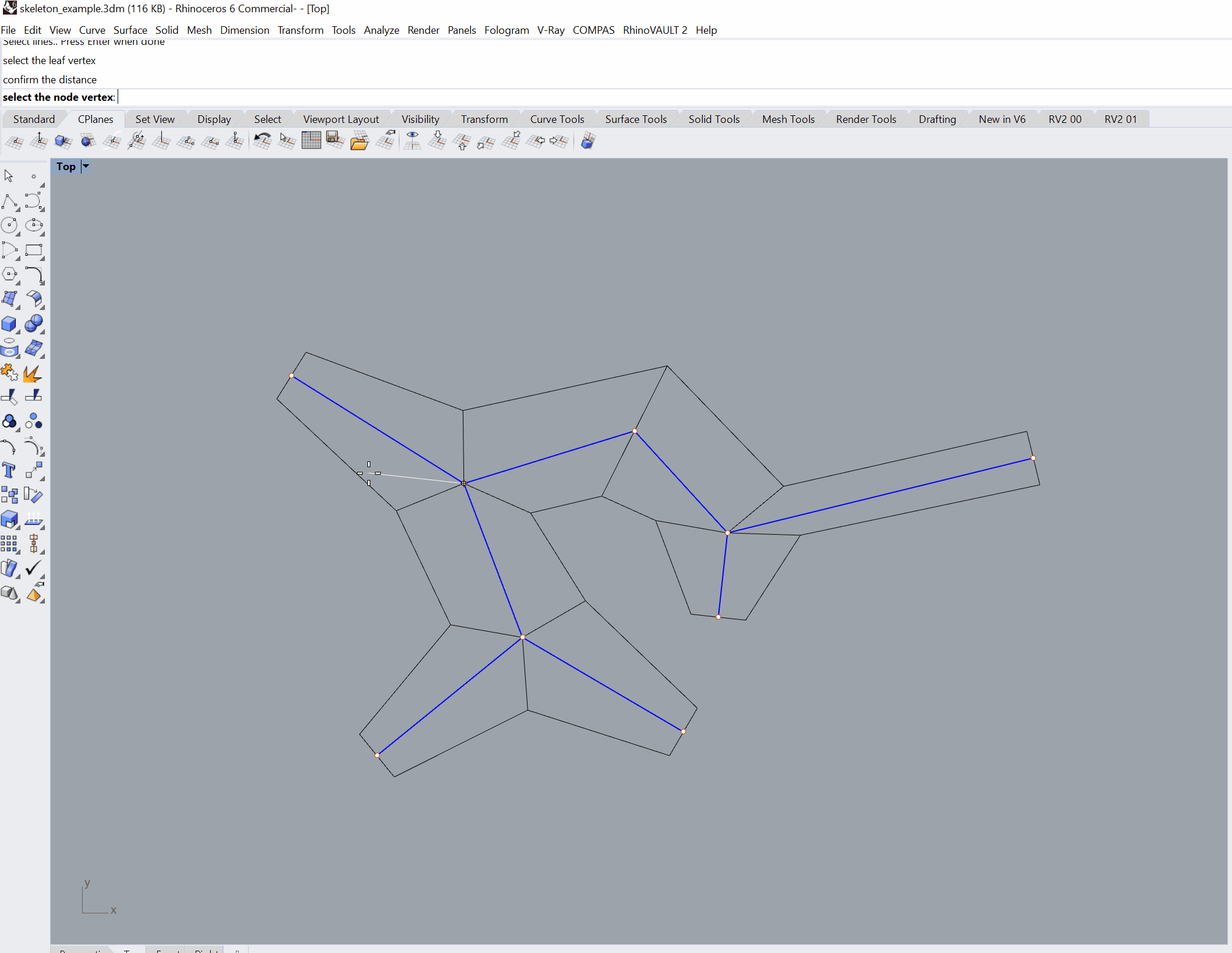
leaf_width
Change the skeleton mesh width at all leaf ends.
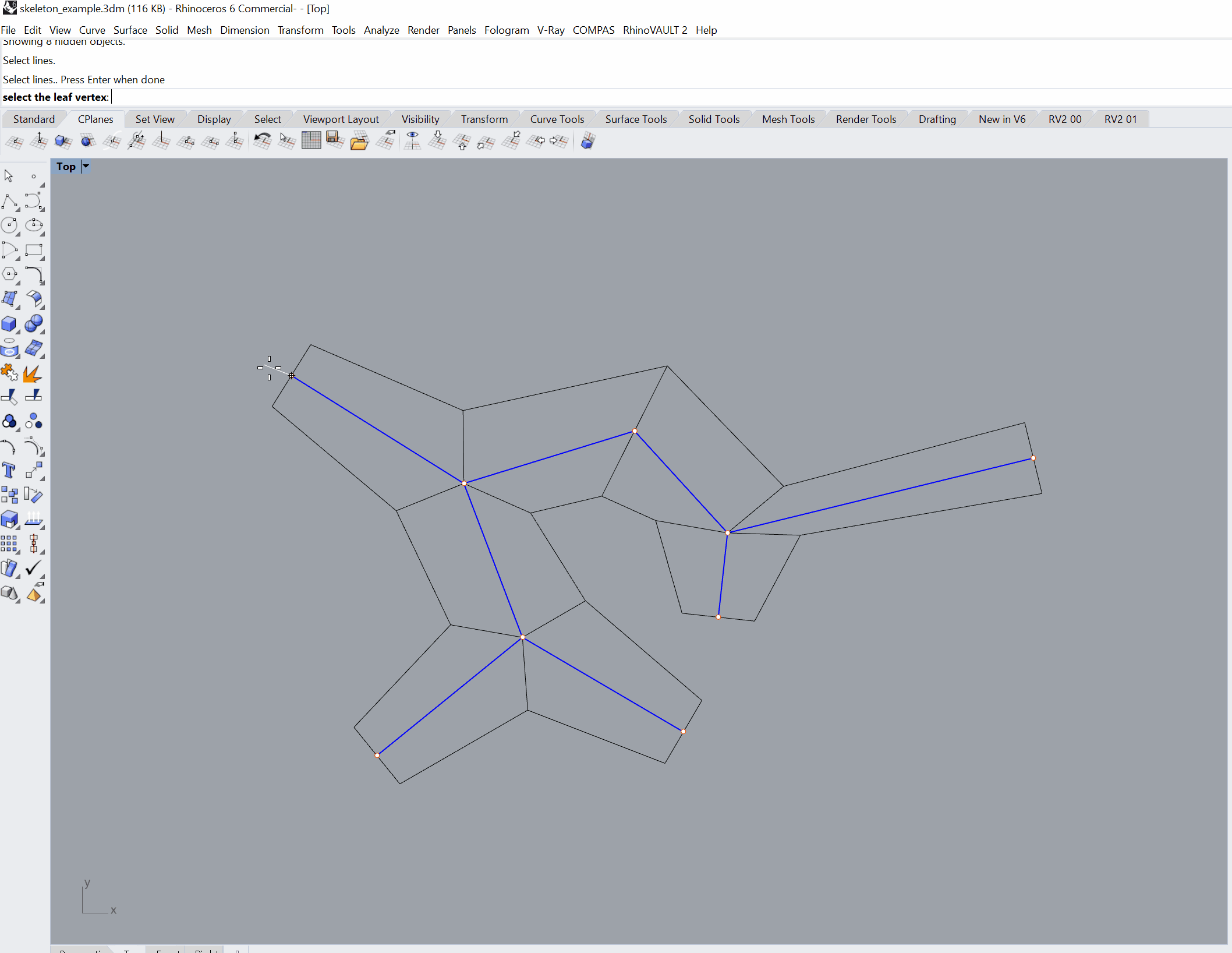
leaf_extend
Change how far or to which direction to extend the leaf ends.
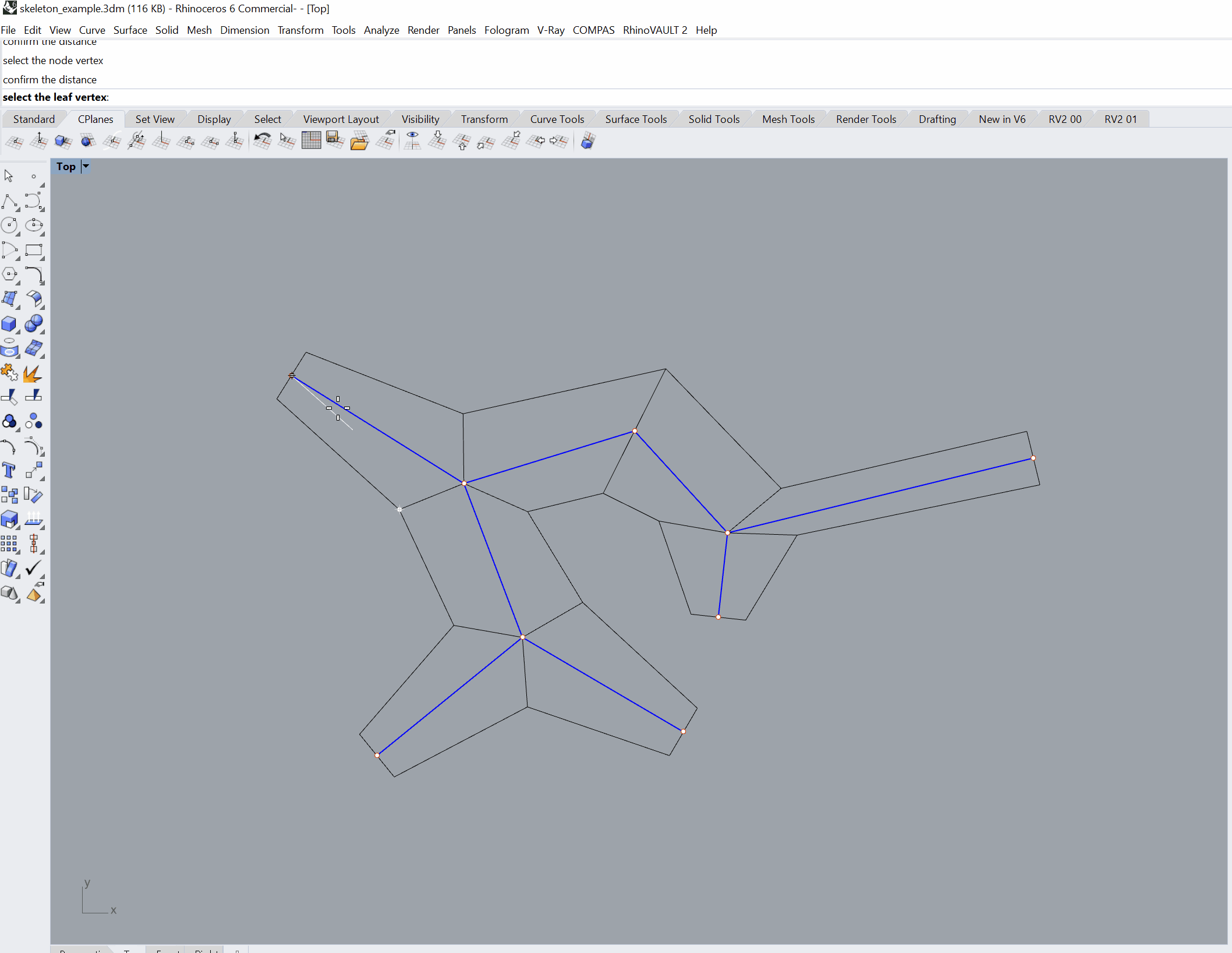
m_skeleton
Move a skeleton vertex. All related descendent vertices will be updated accordingly.
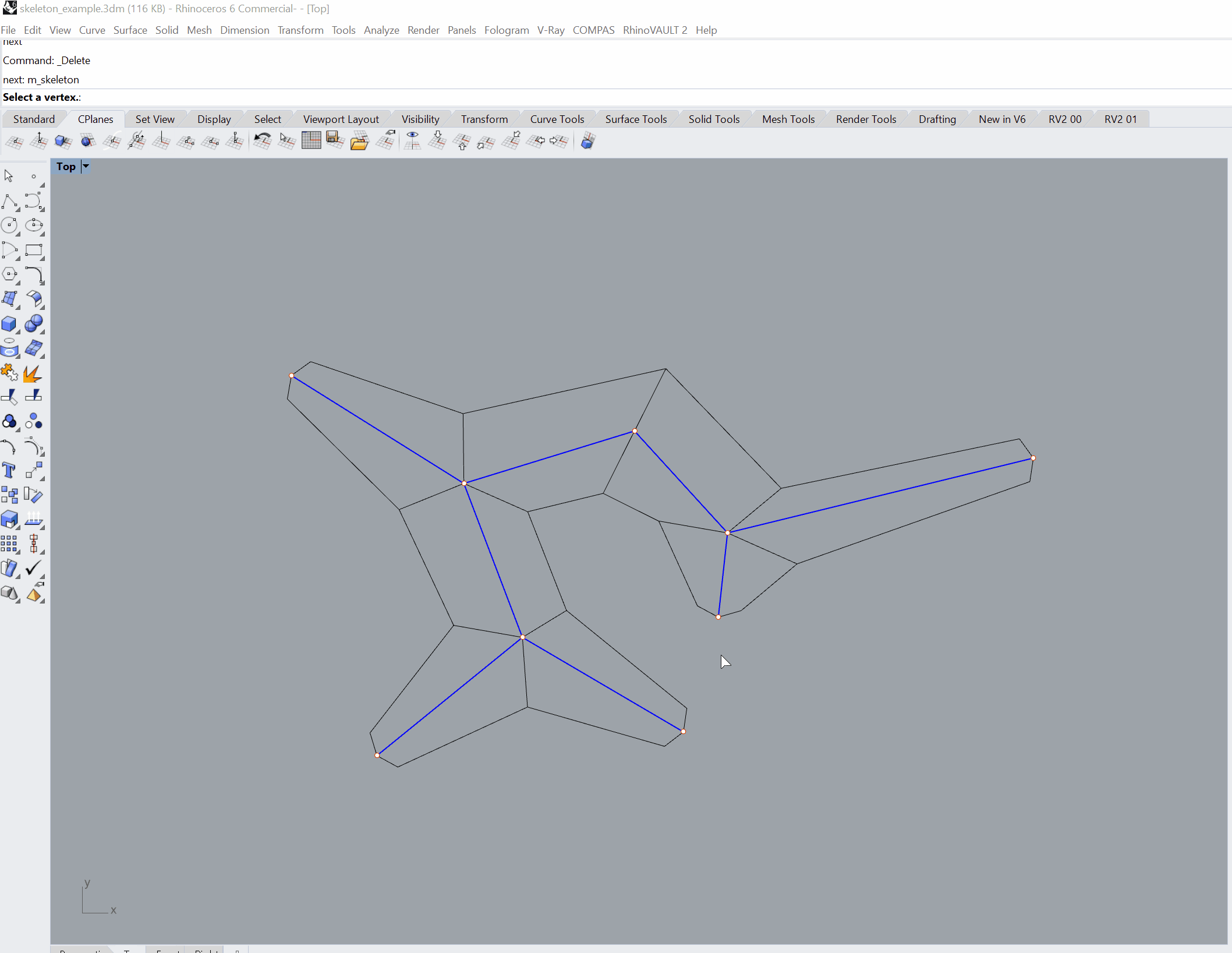
m_mesh
Move a mesh vertex. Local transformation will be stored in the datastructure. When this vertex moves following skeleton vertex, the local movement will be transformed accordingly.
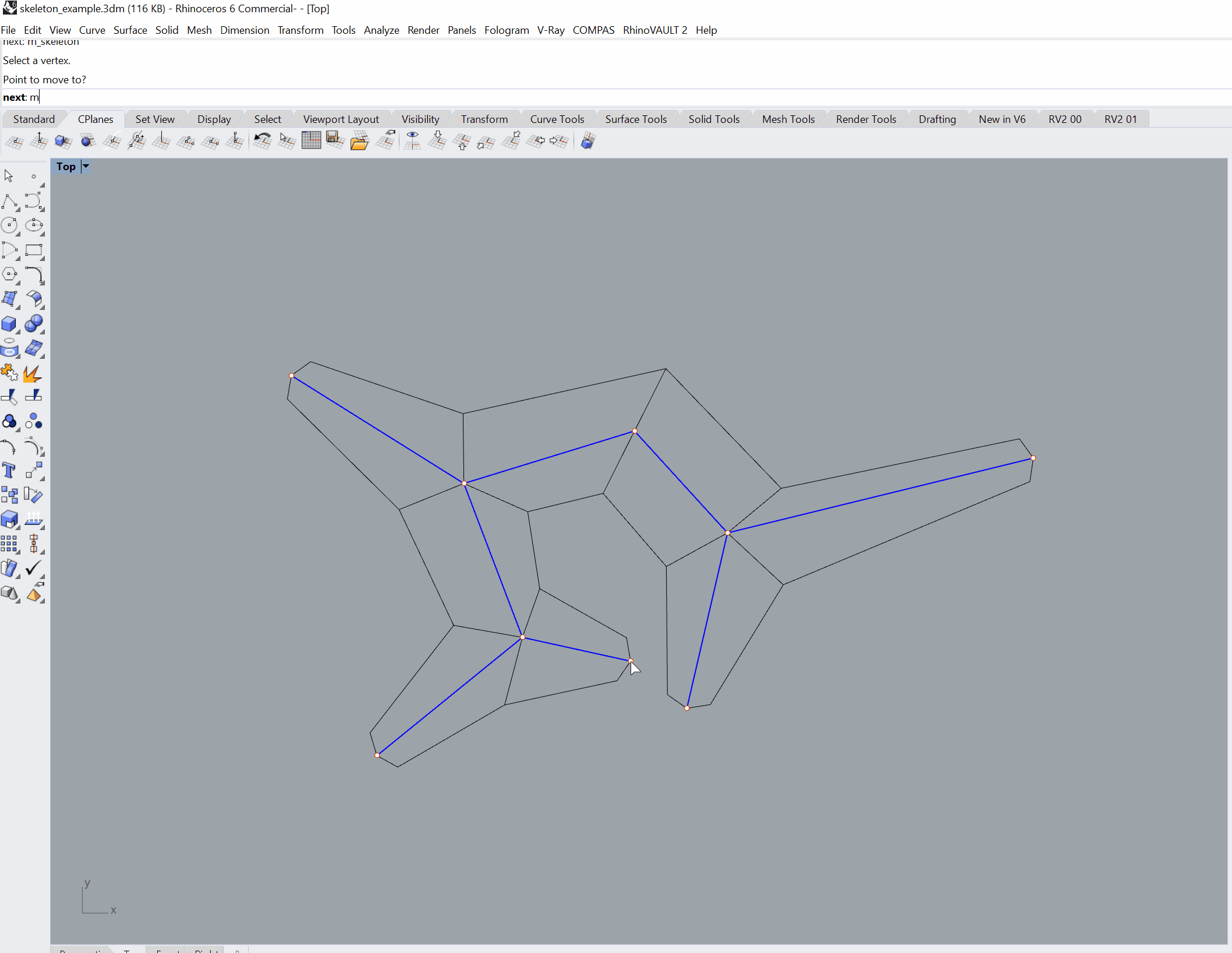
subdivide
Increase the high poly mesh subdivision level by increasing attribute sub_level
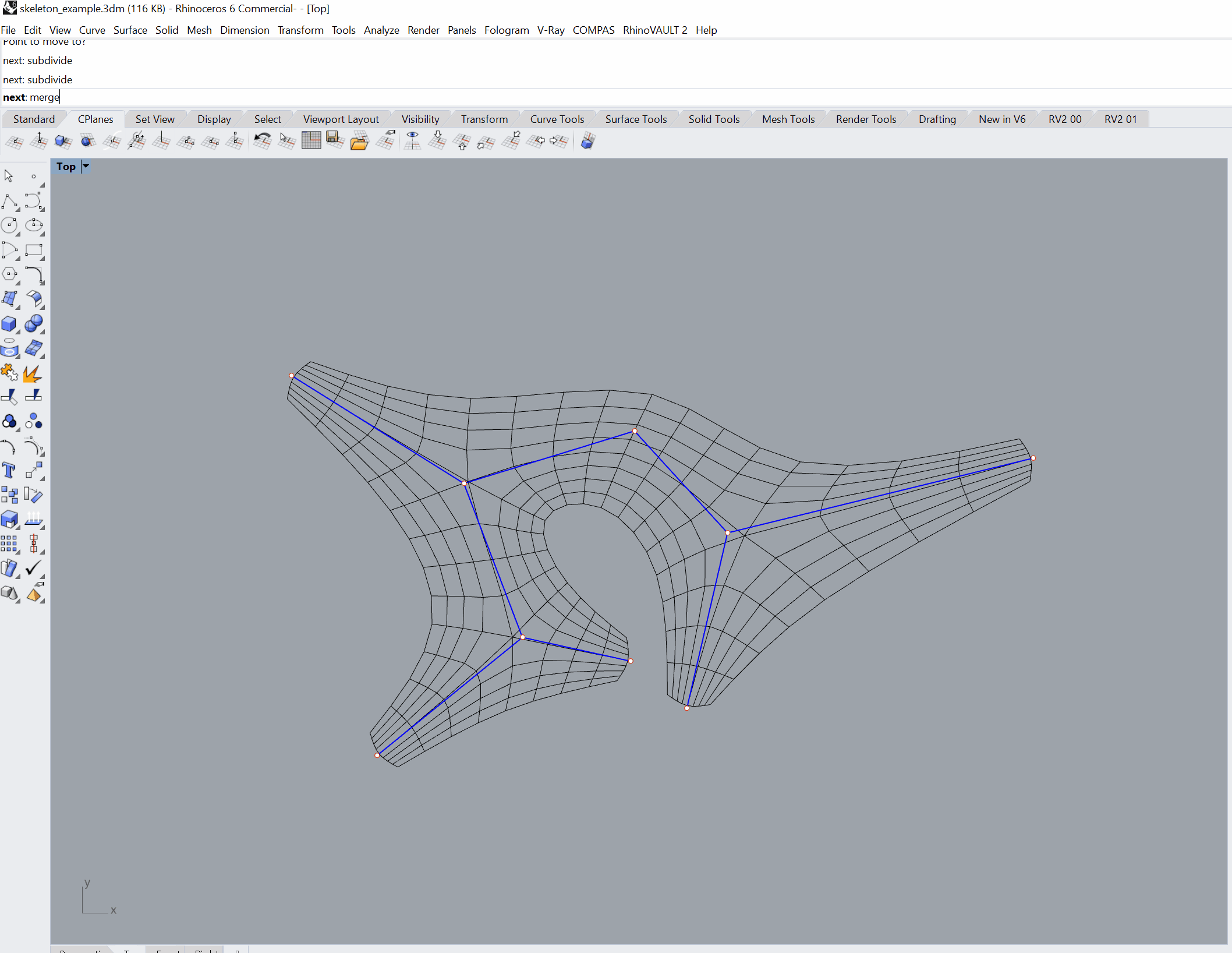
merge
Decrease the high poly mesh subdivision level by decreasing attribute sub_level
add_lines
Add more lines to the current skeleton branches.
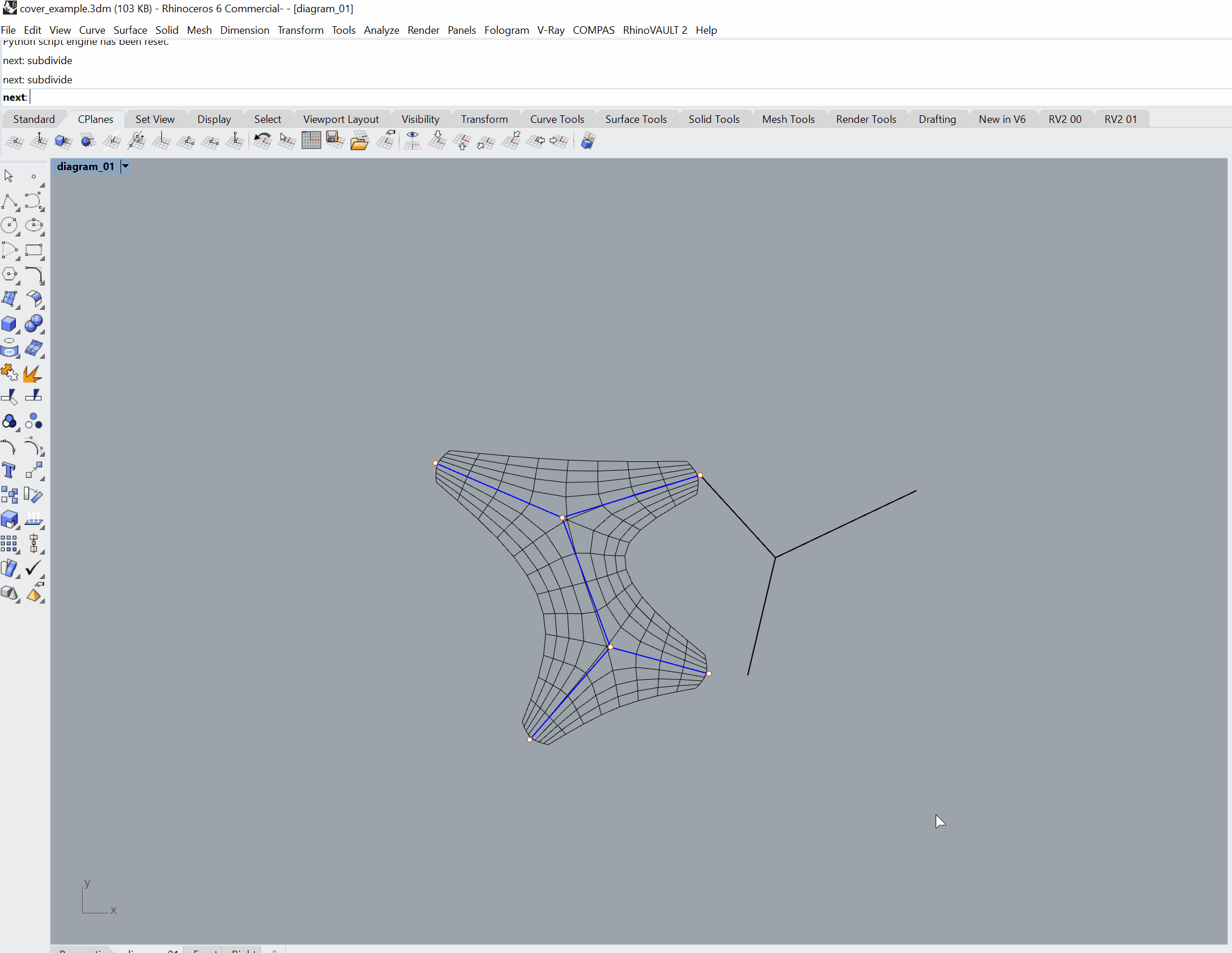
remove_lines
Remove lines from the current skeleton branches.
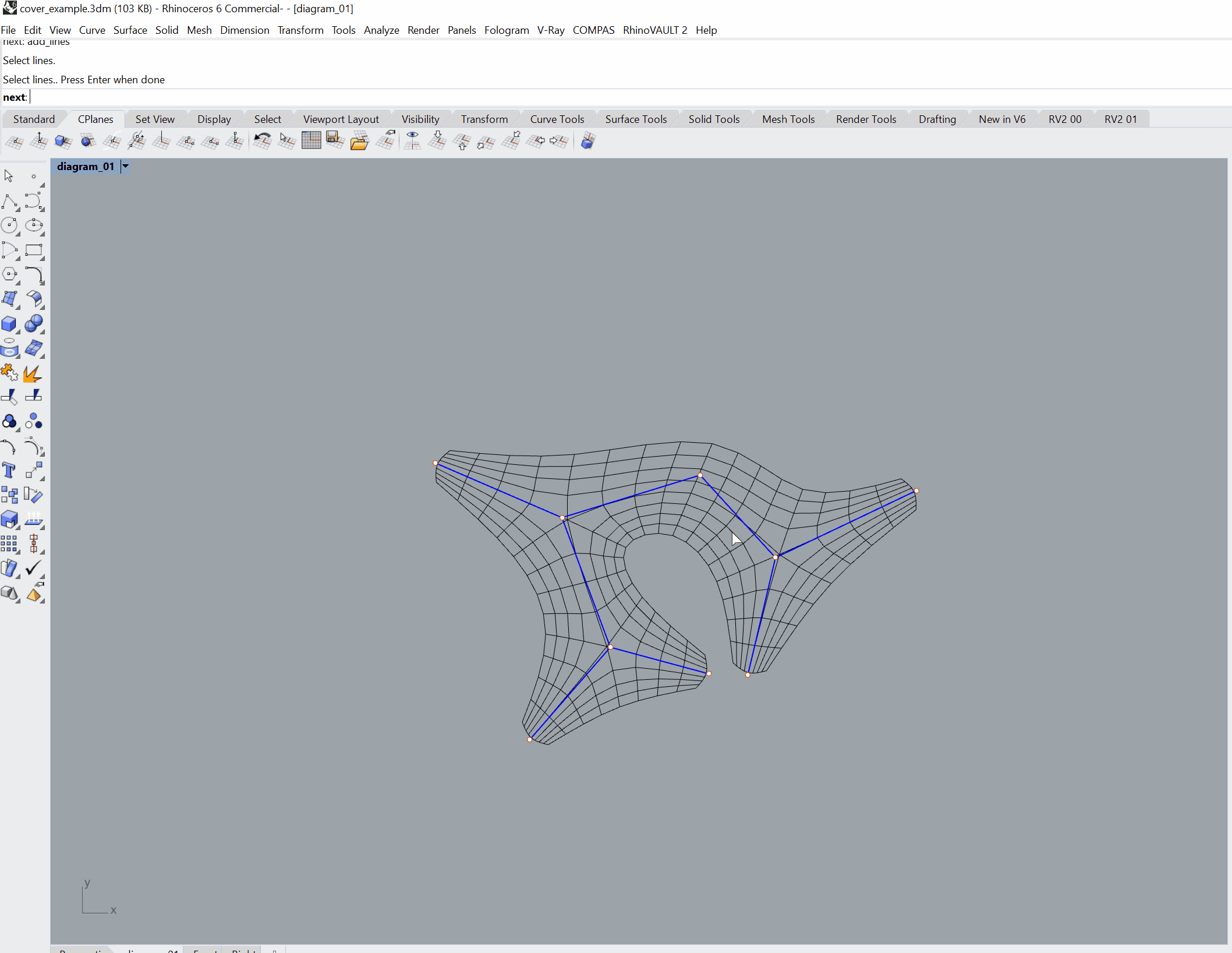
finish
End this round of editing and draw the resulting high-poly mesh in Rhino.